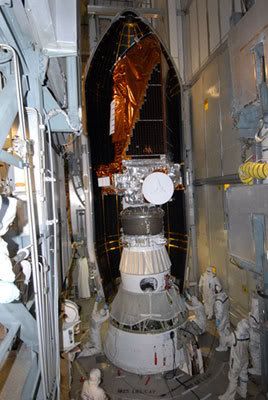
NASA / Jack Pfaller
IT'S LAUNCH DAY...
****
Five Things About the Kepler Mission (Press Release)
Some quick facts about the Kepler mission, scheduled to launch from Florida tonight:
- Kepler is the world's first mission with the ability to find true Earth analogs -- planets that orbit stars like our sun in the "habitable zone." The habitable zone is the region around a star where the temperature is just right for water -- an essential ingredient for life as we know it -- to pool on a planet's surface.
- By the end of Kepler's three-and-one-half-year mission, it will give us a good idea of how common or rare other Earths are in our Milky Way galaxy. This will be an important step in answering the age-old question: Are we alone?
- Kepler detects planets by looking for periodic dips in the brightness of stars. Some planets pass in front of their stars as seen from our point of view on Earth; when they do, they cause their stars to dim slightly, an event Kepler can see.
- Kepler has the largest camera ever launched into space, a 95-megapixel array of charge-coupled devices, or CCDs, like those in everyday digital cameras.
- Kepler's telescope is so powerful that, from its view up in space, it could detect one person in a small town turning off a porch light at night.
Source: Jet Propulsion Laboratory
****

NASA

No comments:
Post a Comment